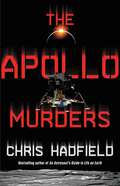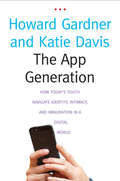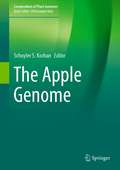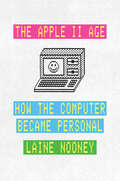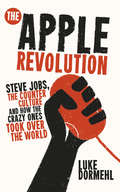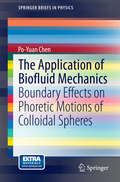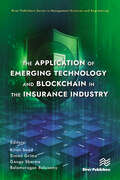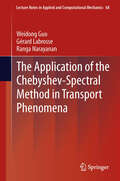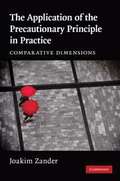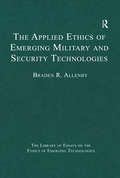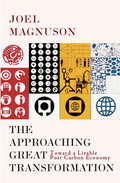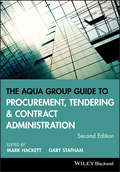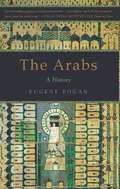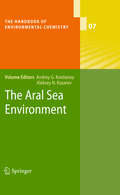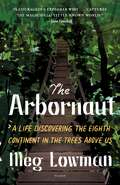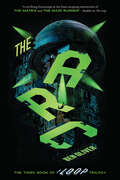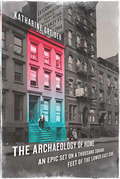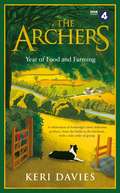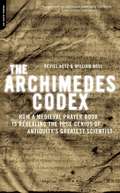- Table View
- List View
The Apollo Missions for Kids: The People and Engineering Behind the Race to the Moon, with 21 Activities (For Kids series)
by Jerome PohlenIn 1961 President Kennedy issued a challenge to land a person on the moon and return safely to Earth before the end of the 1960s, a bold proclamation at the time, given that only one US astronaut had been to space, for just 15 minutes. The race to the moon was part of the larger Cold War between the United States and the Soviet Union, a race where the Russians appeared far ahead of the Americans. Apollo was a complicated, dangerous and expensive adventure involving 400,000 people across the nation. Before it was over, NASA had made 11 Apollo flights, six of which landed on the moon, and eight astronauts had lost their lives. But it was also fun, and the crews never missed a chance to enjoy the trip or pull off a prank 240,000 miles from home. The Apollo Missions for Kids tells the story from the perspective of those who lived it—the astronauts and their families, the controllers and engineers, the technicians and politicians who made the impossible possible.
The Apollo Murders
by Colonel Chris HadfieldAn exceptional debut thriller and &“exciting journey&” into the dark heart of the Cold War and the space race from New York Times bestselling author and astronaut Chris Hadfield (Andy Weir, author of The Martian and Project Hail Mary). 1973: a final, top-secret mission to the Moon. Three astronauts in a tiny spaceship, a quarter million miles from home. A quarter million miles from help.NASA is about to launch Apollo 18. While the mission has been billed as a scientific one, flight controller Kazimieras "Kaz" Zemeckis knows there is a darker objective. Intelligence has discovered a secret Soviet space station spying on America, and Apollo 18 may be the only chance to stop it.But even as Kaz races to keep the NASA crew one step ahead of their Russian rivals, a deadly accident reveals that not everyone involved is quite who they were thought to be. With political stakes stretched to the breaking point, the White House and the Kremlin can only watch as their astronauts collide on the lunar surface, far beyond the reach of law or rescue. Full of the fascinating technical detail that fans of The Martian loved, and reminiscent of the thrilling claustrophobia, twists, and tension of The Hunt for Red October, The Apollo Murders is a high-stakes thriller unlike any other. Chris Hadfield captures the fierce G-forces of launch, the frozen loneliness of space, and the fear of holding on to the outside of a spacecraft orbiting the Earth at 17,000 miles per hour as only someone who has experienced all of these things in real life can. Strap in and count down for the ride of a lifetime. &“Nail-biting . . . I couldn&’t put it down.&” —James Cameron, writer and director of Avatar and Titanic &“Not to be missed.&” —Frederick Forsyth, author of The Day of the Jackal &“An explosive thriller by a writer who has actually been to space . . . Strap in for the ride!&” —Gregg Hurwitz, author of Orphan X
The App Generation
by Katie Davis Howard GardnerNo one has failed to notice that the current generation of youth is deeply--some would say totally--involved with digital media. Professors Howard Gardner and Katie Davis name today's young people The App Generation, and in this spellbinding book they explore what it means to be "app-dependent" versus "app-enabled" and how life for this generation differs from life before the digital era. Gardner and Davis are concerned with three vital areas of adolescent life: identity, intimacy, and imagination. Through innovative research, including interviews of young people, focus groups of those who work with them, and a unique comparison of youthful artistic productions before and after the digital revolution, the authors uncover the drawbacks of apps: they may foreclose a sense of identity, encourage superficial relations with others, and stunt creative imagination. On the other hand, the benefits of apps are equally striking: they can promote a strong sense of identity, allow deep relationships, and stimulate creativity. The challenge is to venture beyond the ways that apps are designed to be used, Gardner and Davis conclude, and they suggest how the power of apps can be a springboard to greater creativity and higher aspirations.
The Apple Genome (Compendium of Plant Genomes)
by Schuyler S. KorbanThis book covers information on the economics; botany, taxonomy, and origin; germplasm resources; cytogenetics and nuclear DNA; genetic improvement efforts of scion cultivars; genetic and genomic improvement efforts of rootstocks; genetic and physical mapping; genomic resources; genome and epigenome; regulatory sequences; utility of whole-genome sequencing and gene editing in trait dissection; flowering and juvenility; cold hardiness and dormancy; fruit color development; fruit acidity and sugar content; metabolomics; biology and genomics of the microbiome; apple domestication; as well as other ‘omics’ opportunities and challenges for genetic improvement of the apple. The cultivated apple (Malus x domestica Borkh.) is one of the most important tree fruit crops of temperate regions of the world. It is widely cultivated and grown in North America, Europe, and Asia. The apple fruit is a highly desirable fruit due to its flavor, sugar and acid content, metabolites, aroma, as well as its overall texture and palatability. Furthermore, it is a rich source of important nutrients, including antioxidants, vitamins, and dietary fiber.
The Apple II Age: How the Computer Became Personal
by Laine NooneyAn engrossing origin story for the personal computer—showing how the Apple II’s software helped a machine transcend from hobbyists’ plaything to essential home appliance. Skip the iPhone, the iPod, and the Macintosh. If you want to understand how Apple Inc. became an industry behemoth, look no further than the 1977 Apple II. Designed by the brilliant engineer Steve Wozniak and hustled into the marketplace by his Apple cofounder Steve Jobs, the Apple II became one of the most prominent personal computers of this dawning industry. The Apple II was a versatile piece of hardware, but its most compelling story isn’t found in the feat of its engineering, the personalities of Apple’s founders, or the way it set the stage for the company’s multibillion-dollar future. Instead, historian Laine Nooney shows, what made the Apple II iconic was its software. In software, we discover the material reasons people bought computers. Not to hack, but to play. Not to code, but to calculate. Not to program, but to print. The story of personal computing in the United States is not about the evolution of hackers—it’s about the rise of everyday users. Recounting a constellation of software creation stories, Nooney offers a new understanding of how the hobbyists’ microcomputers of the 1970s became the personal computer we know today. From iconic software products like VisiCalc and The Print Shop to historic games like Mystery House and Snooper Troops to long-forgotten disk-cracking utilities, The Apple II Age offers an unprecedented look at the people, the industry, and the money that built the microcomputing milieu—and why so much of it converged around the pioneering Apple II.
The Apple Revolution: Steve Jobs, the Counterculture and How the Crazy Ones Took over the World
by Luke DormehlOn 26 May, 2010 Apple Inc. passed Microsoft in valuation as the world's largest technology company. Its consumer electronic products - ranging from computers to mobile phones to portable media devices, not to mention its iTunes, iBook and App Store - have influenced nearly every facet of our lives, and it shows no sign of slowing down. But how did Apple - a company set up in the back room of a house by two friends, and one that always marketed itself as the underdog - become the marketplace leader (and the world's second largest company overall), and is it a good thing to have one company hold so much power? In The Apple Revolution Luke Dormehl shares the inside story of how Apple Inc. came to be; from the formation of the company's philosophies and user-friendly ethos, to the "iPod moment" and global domination, leaving you with a deep understanding of how it was created, why it has flourished, and where it might be going next.
The Application of Biofluid Mechanics
by Po-Yuan Chen"The Application of Biofluid Mechanics: Boundary Effects on Phoretic Motions of Colloidal Spheres" focuses on the phoretic motion behavior of various micron- to nanometer-size particles. The content of this book is divided into two parts: one on the concentration gradient-driven diffusiophoresis and osmophoresis, and one on thermocapillary motion and thermophoretic motion driven by temperature gradient. Diffusiophoresis and osmophoresis are mainly used in biomedical engineering applications, such as drug delivery, purification, and the description of the behavior of the immune system; thermocapillary motion and thermophoretic motion are applied in the field of semiconductors as well as in suspended impurities removal. The book also provides a variety of computer programming source codes compiled using Fortran for researchers' future applications. This book is intended for chemical engineers, biomedical engineers and scientists, biophysicists and fundamental chemotaxis researchers. Dr. Po-Yuan Chen is an Assistant Professor at the Department of Biological Science and Technology, China Medical University, Taichung, Taiwan.
The Application of Emerging Technology and Blockchain in the Insurance Industry (River Publishers Series in Management Sciences and Engineering)
by Simon Grima Balamurugan Balusamy Kiran Sood Ganga SharmaThis book is a unique guide to the disruptions, innovations, and opportunities that technology provides the insurance sector and acts as an academic/industry-specific guide for creating operational effectiveness, managing risk, improving financials, and retaining customers. It also contains the current philosophy and actionable strategies from a wide range of contributors who are experts on the topic. It logically explains why traditional ways of doing business will soon become irrelevant and therefore provides an alternative choice by embracing technology. Practitioners and students alike will find value in the support for understanding practical implications of how technology has brought innovation and modern methods to measure, control, and evaluation price risk in the insurance business. It will help insurers reduce operational costs, strengthen customer interactions, target potential customers to provide usage-based insurance, and optimize the overall business. Retailers and industry giants have made significant strides in adopting digital platforms to deliver a satisfying customer experience. Insurance companies must adjust their business models and strategies to remain competitive and take advantage of technology. Insurance companies are increasingly investing in IT and related technologies to improve customer experience and reduce operational costs. Innovation through new technologies is a key driver of change in the financial sector which is often accompanied by uncertainty and doubt. This book will play a pivotal role in risk management through fraud detection, regulatory compliances, and claim settlement leading to overall satisfaction of customers.
The Application of Neural Networks in the Earth System Sciences
by Vladimir M. KrasnopolskyThis book brings together a representative set of Earth System Science (ESS) applications of the neural network (NN) technique. It examines a progression of atmospheric and oceanic problems, which, from the mathematical point of view, can be formulated as complex, multidimensional, and nonlinear mappings. It is shown that these problems can be solved utilizing a particular type of NN - the multilayer perceptron (MLP). This type of NN applications covers the majority of NN applications developed in ESSs such as meteorology, oceanography, atmospheric and oceanic satellite remote sensing, numerical weather prediction, and climate studies. The major properties of the mappings and MLP NNs are formulated and discussed. Also, the book presents basic background for each introduced application and provides an extensive set of references. "This is an excellent book to learn how to apply artificial neural network methods to earth system sciences. The author, Dr. Vladimir Krasnopolsky, is a universally recognized master in this field. With his vast knowledge and experience, he carefully guides the reader through a broad variety of problems found in the earth system sciences where neural network methods can be applied fruitfully. (...) The broad range of topics covered in this book ensures that researchers/graduate students from many fields (...) will find it an invaluable guide to neural network methods." (Prof. William W. Hsieh, University of British Columbia, Vancouver, Canada) "Vladimir Krasnopolsky has been the "founding father" of applying computation intelligence methods to environmental science; (...) Dr. Krasnopolsky has created a masterful exposition of a young, yet maturing field that promises to advance a deeper understanding of best modeling practices in environmental science." (Dr. Sue Ellen Haupt, National Center for Atmospheric Research, Boulder, USA) "Vladimir Krasnopolsky has written an important and wonderful book on applications of neural networks to replace complex and expensive computational algorithms within Earth System Science models. He is uniquely qualified to write this book, since he has been a true pioneer with regard to many of these applications. (...) Many other examples of creative emulations will inspire not just readers interested in the Earth Sciences, but any other modeling practitioner (...) to address both theoretical and practical complex problems that may (or will!) arise in a complex system." " (Prof. Eugenia Kalnay, University of Maryland, USA)
The Application of the Chebyshev-Spectral Method in Transport Phenomena
by Ranga Narayanan Gérard Labrosse Weidong GuoTransport phenomena problems that occur in engineering and physics are often multi-dimensional and multi-phase in character. When taking recourse to numerical methods the spectral method is particularly useful and efficient. The book is meant principally to train students and non-specialists to use the spectral method for solving problems that model fluid flow in closed geometries with heat or mass transfer. To this aim the reader should bring a working knowledge of fluid mechanics and heat transfer and should be readily conversant with simple concepts of linear algebra including spectral decomposition of matrices as well as solvability conditions for inhomogeneous problems. The book is neither meant to supply a ready-to-use program that is all-purpose nor to go through all manners of mathematical proofs. The focus in this tutorial is on the use of the spectral methods for space discretization, because this is where most of the difficulty lies. While time dependent problems are also of great interest, time marching procedures are dealt with by briefly introducing and providing a simple, direct, and efficient method. Many examples are provided in the text as well as numerous exercises for each chapter. Several of the examples are attended by subtle points which the reader will face while working them out. Some of these points are deliberated upon in endnotes to the various chapters, others are touched upon in the book itself.
The Application of the Precautionary Principle in Practice
by Joakim ZanderThis overview of the role played by the precautionary principle in international trade law, European law and national law compares how precautionary considerations have been applied in the fields of pesticide regulation and the regulation of base stations for mobile telephones in Sweden, the UK and the US. A number of problems in the current application of the precautionary principle are identified and discussed. For example, it is shown that a firm reliance on a wide and open-ended precautionary principle may lead to problems with the consistency, foreseeability, effectiveness and efficiency of measures intended to reduce environmental or health risks. It is suggested that the precautionary principle indeed may be an important tool, but that in order to be acceptable it must be coupled with strong requirements on the performance of risk assessments, cost/benefit analyses and risk trade-off analyses.
The Applied Ethics of Emerging Military and Security Technologies (The Library of Essays on the Ethics of Emerging Technologies)
by Braden R. AllenbyThe essays in this volume illustrate the difficult real world ethical questions and issues arising from accelerating technological change in the military and security domains, and place those challenges in the context of rapidly shifting geopolitical and strategic frameworks. Specific technologies such as autonomous robotic systems, unmanned aerial vehicles, cybersecurity and cyberconflict, and biotechnology are highlighted, but the essays are chosen so that the broader implications of fundamental systemic change are identified and addressed. Additionally, an important consideration with many of these technologies is that even if they are initially designed and intended for military or security applications, they inevitably spread to civil society, where their application may raise very different ethical questions around such core values as privacy, security from criminal behaviour, and state police power. Accordingly, this volume is of interest to students of military or security domains, as well as to those interested in technology and society, and the philosophy of technology.
The Appraisal of Rural Property (2nd edition)
by Appraisal InstituteThis text is a comprehensive reference work that covers all aspects of the valuation of rural properties from both theoretical and practical perspectives. It explores the components of rural property value and the essentials of property inspection, data collection and analysis, and the application of valuation methodology. Specific details relating to dairy farms, livestock ranches, and orchards are included as well as information on government regulations and resources.
The Approaching Great Transformation
by Joel Magnuson Helena Norberg-HodgeHow should we act and think economically in the world as the era of cheap oil comes to an end? The Approaching Great Transformation begins to answer this massive question, focusing on the people and communities already at work on the transition: energy descent pioneers in the UK and the US educating their communities about the road ahead, small enterprises defying traditional "profit" in favor of permanence and sustainability, and cities preparing for a post carbon future.Highlighting the work of thinkers like John Ruskin and E. F. Schumacher, Magnuson here builds on his previous book, Mindful Economics. is already being done. The Approaching Great Transformation extends the ideas put forth in Magnuson's previous book,Mindful Economics, and features a foreword by Helena Noberg-Hodge.
The Aqua Group Guide to Procurement, Tendering and Contract Administration
by Gary Statham Mark HackettThis key text for the building team is an authoritative guide and gives a detailed account of the team's roles and responsibilities, with best industry practice required to ensure that building projects meet clients' expectations on time, cost and quality. The second edition of The Aqua Group Guide to Procurement, Tendering and Contract Administration has been edited, enlarged and updated by a high-profile author team with unparalleled experience of both private and public sectors, as well as of teaching on QS courses. It covers the entire building process from inception to final account and throughout, the emphasis is on current best practice. This edition has new material on the CDM regulations; JCT contracts; the RIBA Plan of Work; the RICS New Rules of Measurement; BIM; and Sustainability - as well as a general update for industry changes, especially on procurement; internationalisation; and PFI. With clear and thorough explanations, you are taken through self-contained chapters covering the detail of the briefing stage, procurement methods, tendering procedures, and contract administration. The period from starting a college course to successful completion of professional examinations represents a long and steep learning curve. The range of skills and the knowledge required to perform work efficiently and effectively might, at first, seem rather daunting. Although designed as an introductory textbook for undergraduates in construction, architecture and quantity surveying, The Aqua Group Guide offers an excellent overview of contract administration and will provide you with sufficient understanding to hold you in good stead for your early years in professional practice.
The Aquaponic Farmer: A Complete Guide to Building and Operating a Commercial Aquaponic System
by Adrian Southern Whelm King&“The essential guide for people serious about setting up a commercial, cold-water aquaponic system.&” —Dr. Daniel Baker, Department of Fisheries and Aquaculture, Vancouver Island University Profitable cold-water fish and vegetable production. Join the aquaponic farming revolution! Built around a proven 120&’ greenhouse system operable by one person, The Aquaponic Farmer is the game changer that distills vast experience and complete step-by-step guidance for starting and running a cold-water aquaponic farming business—raising fish and vegetables together commercially. Coverage includes: A primer on cold-water aquaponics Pros and cons of different systems Complete design and construction of a Deep Water Culture system Recommended and optional equipment and tools System management, standard operating procedures, and maintenance checklists Maximizing fish and veg production Strategies for successful sales and marketing of fish and plants. As the only comprehensive commercial cold-water resource, The Aquaponic Farmer is essential for farmers contemplating the aquaponics market, aquaponic gardeners looking to go commercial, and anyone focused on high quality food production. Aquaponic farming is the most promising innovation for a sustainable, profitable, localized food system. Until now, systems have largely focused on warm-water fish such as tilapia. A lack of reliable information for raising fish and vegetables in the cool climates of North America and Europe has been a major stumbling block. The Aquaponic Farmer is the toolkit you need. &“Provides almost a step by step cookbook on all pertinent aspects of aquaponics and is based upon the authors&’ experiences from their own successful farm.&” —Michael B. Timmons, PhD & PE, Professor Biological & Environmental Engineering, Cornell University
The Arabs
by Eugene RoganTo American observers, the Arab world often seems little more than a distant battleground characterized by religious zealotry and political chaos. Years of tone-deaf US policies have left the region powerless to control its own destiny-playing into a longstanding sense of shame and impotence for a once-mighty people. In this definitive account, preeminent historian Eugene Rogan traces five centuries of Arab history, from the Ottoman conquests through the British and French colonial periods and up to the present age of unipolar American hegemony. The Arab world is now more acutely aware than ever of its own vulnerability, and this sense of subjection carries with it vast geopolitical consequences. Drawing from Arab sources little known to Western readers, Rogan’sThe Arabswill transform our understanding of the past, present, and future of one of the world’s most tumultuous regions.
The Aral Sea Environment
by Aleksey N. Kosarev Andrey G. KostianoyThe environmental problems in the Aral Sea region continue to worsen. This volume presents the information gathered to date on various aspects of the Aral Sea environment. Specialists from institutions in Russia, Uzbekistan, France, Germany and the USA cover different topics - from the paleohistory and archaeology of the region, to the present physical, chemical and biological state of the sea, and the analysis of the runoff and deltas of the Amudarya and Syrdarya rivers. Further, the regional climate change is discussed and reasons for the progressing environmental crisis and the socio-economic problems in the region are highlighted. The Aral Sea Environment is addressed to scientists working in the fields of physical oceanography, marine chemistry, biology, and the environmental sciences.
The Arbitration Act 1996
by Bruce Harris Jonathan Tecks Rowan PlanteroseThe most readable, useful, practical and user-friendly guide to the Arbitration Act 1996.The Arbitration Act 1996 is a section by section commentary on the Act, which Lord Bingham described as "intensely practical and admirably user-friendly" when it was first published. The fifth edition has been updated by considering in excess of 300 new cases decided since publication of the 4th edition. In addition there have been some significant changes to the Model Law since publication of the previous edition, (which take it into areas where UK arbitration does not go), and these changes are documented, updated and commented upon. In previous editions, the authors have limited themselves to mentioning states conclusively declared to be parties to the New York Convention by Order in Council. This tends to follow some way behind the current position, however, so a more comprehensive coverage of states which are parties to the New York Convention is included. The result is a thorough update, providing the most readable and useful guide to the Act. provides a section by section commentary on the Act and covers all the key casespublished in conjunction with the Chartered Institute of Arbitrators and used by them as a recommended training textthe bestseller of the four original guides to the 1996 Actwritten by three practising arbitrators, two of whom are also practising barristers'There should not be a practitioner who does not have a copy...highly recommended.' - Arbitration
The Arbornaut: A Life Discovering the Eighth Continent in the Trees Above Us
by Meg Lowman“An eye-opening and enchanting book by one of our major scientist-explorers.” —Diane Ackerman, author of The Zookeeper’s WifeNicknamed the “Real-Life Lorax” by National Geographic, the biologist, botanist, and conservationist Meg Lowman—aka “CanopyMeg”—takes us on an adventure into the “eighth continent” of the world's treetops, along her journey as a tree scientist, and into climate actionWelcome to the eighth continent!As a graduate student exploring the rain forests of Australia, Meg Lowman realized that she couldn’t monitor her beloved leaves using any of the usual methods. So she put together a climbing kit: she sewed a harness from an old seat belt, gathered hundreds of feet of rope, and found a tool belt for her pencils and rulers. Up she went, into the trees. Forty years later, Lowman remains one of the world’s foremost arbornauts, known as the “real-life Lorax.” She planned one of the first treetop walkways and helps create more of these bridges through the eighth continent all over the world. With a voice as infectious in its enthusiasm as it is practical in its optimism, The Arbornaut chronicles Lowman’s irresistible story. From climbing solo hundreds of feet into the air in Australia’s rainforests to measuring tree growth in the northeastern United States, from searching the redwoods of the Pacific coast for new life to studying leaf eaters in Scotland’s Highlands, from conducting a BioBlitz in Malaysia to conservation planning in India and collaborating with priests to save Ethiopia’s last forests, Lowman launches us into the life and work of a field scientist, ecologist, and conservationist. She offers hope, specific plans, and recommendations for action; despite devastation across the world, through trees, we can still make an immediate and lasting impact against climate change. A blend of memoir and fieldwork account, The Arbornaut gives us the chance to live among scientists and travel the world—even in a hot-air balloon! It is the engrossing, uplifting story of a nerdy tree climber—the only girl at the science fair—who becomes a giant inspiration, a groundbreaking, ground-defying field biologist, and a hero for trees everywhere.Includes black-and-white illustrations
The Arc (The Loop)
by Ben OliverIn the final installment of critically acclaimed Loop trilogy, all of humanity hinges on the greatest escape yet.All hope has seemingly been executed.Despite the fact that the truth of their oppressive leaders had been revealed to them, the crowd of Alts cheer as life drained from the boy. But one Alt, Chester “Chilly” Beckett, did not celebrate; his eyes have been opened to the truth. The corpse is dragged away, but Chester remains determined to find out what is going on in the Laboratory on the 65th floor.There, he'll find three subjects tortured in an attempt to extract a regeneration formula… and one of the subjects is, impossibly, a face he never thought he'd seen again. A bold escape sets in motion a race against time as Happy’s plans to release planet-eating nano-bots into the world draw nearer. The Loop team must reassemble, survive Happy’s final attempts to rid the world of the rebels, and figure out how to halt the apocalypse before humanity is destroyed.
The Archaeology of Home: An Epic Set on a Thousand Square Feet of the Lower East Side
by Katharine GreiderWhen Katharine Greider was told to leave her house or risk it falling down on top of her and her family, it spurred an investigation that began with contractors' diagnoses and lawsuits, then veered into archaeology and urban history, before settling into the saltwater grasses of the marsh that fatefully once sat beneath the site of Number 239 East 7th Street. During the journey, Greider examines how people balance the need for permanence with the urge to migrate, and how the home is the resting place for ancestral ghosts. The land on which Number 239 was built has a history as long as America's own. It provisioned the earliest European settlers who needed fodder for their cattle; it became a spoil of war handed from the king's servant to the revolutionary victor; it was at the heart of nineteenth-century Kleinedeutschland and of the revolutionary Jewish Lower East Side. America's immigrant waves have all passed through 7th Street. In one small house is written the history of a young country and the much longer story of humankind and the places they came to call home.
The Archers Year Of Food and Farming: A celebration of Ambridge's most delicious produce, from the fields to the kitchens, with a side order of gossip
by Keri Davies'What's for tea, Clarrielove?' From the fabled kitchens of Ambridge come the recipes and gossip that fuel the nation's favourite village.Whether it's Susan's spicy chilli con carne on the hob or Helen's dramatic tuna bake in the oven, Jill's flapjacks stacked high or Alastair's Goan fish curry hotting up suppertime, this celebration of Ambridge life will take fans even closer to the heart of every Archers home.But this book isn't just a cook-along with our favourite families. It's full to the brim with tales and memories. The Archers Year of Food and Farming shares the ups and downs of the inhabitants of Ambridge and celebrates our countryside in all of its green and pleasant glory.Month-by-month, we learn more about the farming community and those big events in the Ambridge calendar: Shrove Tuesday and Easter, lambing, Open Farm Sunday, the village fete, Apple Day, the harvest, Stir-up Sunday and Deck the Hall.Rural traditions are alive and well in The Archers, but it's a contemporary world that is full of warmth, wit and the unexpected.
The Archers Year Of Food and Farming: A celebration of Ambridges most delicious produce, from the fields to the kitchens, with a side order of gossip
by Keri Davies'What's for tea, Clarrielove?' From the fabled kitchens of Ambridge come the recipes and gossip that fuel the nation's favourite village.Whether it's Susan's spicy chilli con carne on the hob or Helen's dramatic tuna bake in the oven, Jill's flapjacks stacked high or Alastair's Goan fish curry hotting up suppertime, this celebration of Ambridge life will take fans even closer to the heart of every Archers home.But this book isn't just a cook-along with our favourite families. It's full to the brim with tales and memories. The Archers Year of Food and Farming shares the ups and downs of the inhabitants of Ambridge and celebrates our countryside in all of its green and pleasant glory.Month-by-month, we learn more about the farming community and those big events in the Ambridge calendar: Shrove Tuesday and Easter, lambing, Open Farm Sunday, the village fete, Apple Day, the harvest, Stir-up Sunday and Deck the Hall.Rural traditions are alive and well in The Archers, but it's a contemporary world that is full of warmth, wit and the unexpected.
The Archimedes Codex: How a Medieval Prayer Book Is Revealing the True Genius of Antiquity's Greatest Scientist
by Reviel NetzPart archaeological detective story, part science, and part history, The Archimedes Codex tells the astonishing story of a lost manuscript, from its tenth-century creation in ancient Constantinople to the auction block at Christie’s in New York, and how a team of scholars used the latest imaging technology to reveal and decipher the original text. What they found was the earliest surviving manuscript by Archimedes (287 BC#150;212 BC), the greatest mathematician of antiquity#151;a manuscript that established, for the first time, the extent of his mathematical genius, which was two thousand years ahead of modern science.

